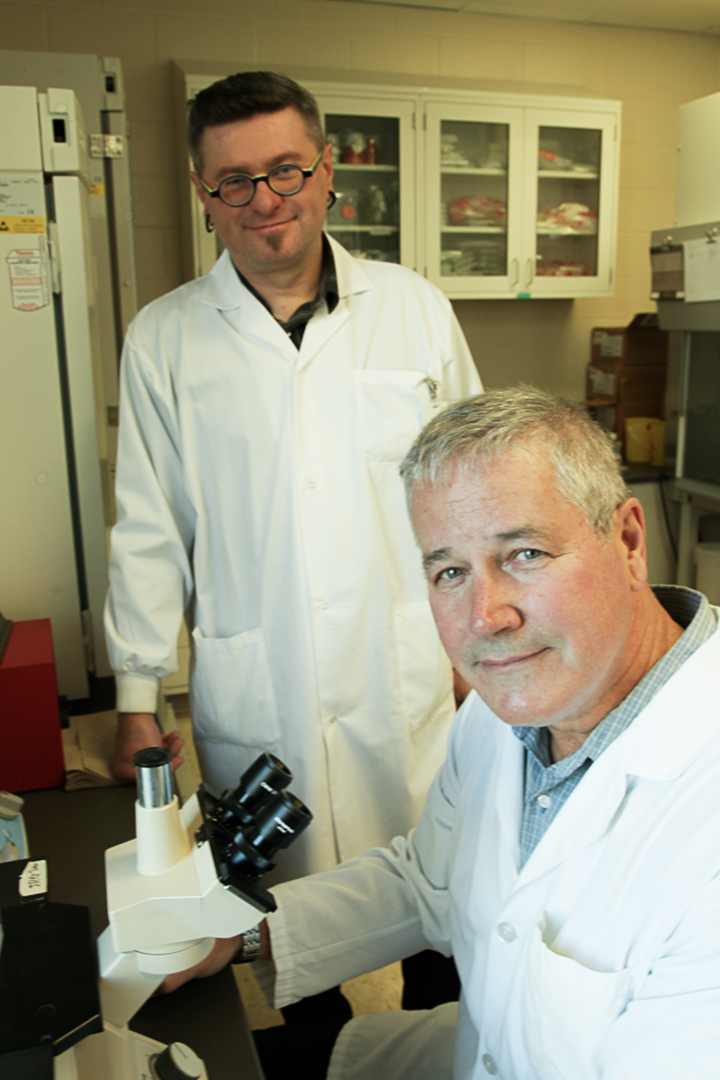Immunotherapy technique holds promise for curing food allergies


AllerGen Research Leader Dr. John Gordon and his team at the University of Saskatchewan have developed a new immunotherapy technique that reverses food allergies in mice. Their research was co-funded by AllerGen and CIHR.
The findings, published in the Journal of Allergy and Clinical Immunology, will lead next to testing the treatment on humanized mice. Pending Health Canada approval, the first human trial could begin in about a year, according to Dr. Gordon.
“We predict the treatment could be on the market within five to 10 years,” he adds.
“This discovery portends a major break-through towards a therapeutic reversal of food allergen sensitivity,” said AllerGen’s Scientific Director, Dr. Judah Denburg.
“The treatment prevents anaphylactic responses in what were previously fully sensitive mice, opening the door for translating this therapy into the clinic.”
The pioneering treatment involves exposing, in a test tube, a subject’s dendritic cells to a mix of proteins, an acid naturally occurring in the human gut, and an allergen; and then reintroducing the modified cells back into the subject.
There is compelling evidence that the technique could be effective in humans: Dr. Gordon’s team has previously reversed an asthmatic response in human cells in a test tube, and effectively eliminated asthma in afflicted mice.
The technique also holds potential for treating autoimmune disorders like multiple sclerosis. “It would take very little to adapt the therapy for autoimmune diseases,” Dr. Gordon notes.
“Even if we only cure 25 percent of subjects, it would be life-changing for affected individuals.”
